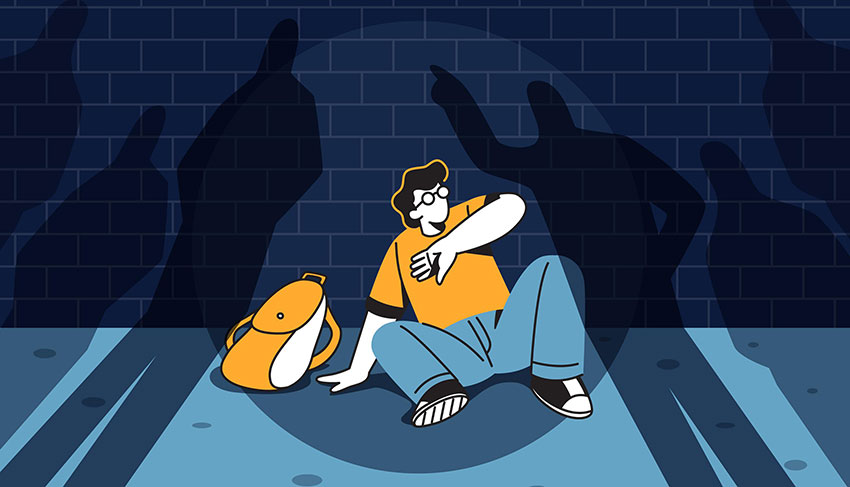
Ragging, also known as hazing or initiation rituals, has been a prevalent issue in educational institutions around the world. It involves senior students subjecting newcomers to various forms of physical, mental, or emotional abuse in the name of bonding or initiation. While often portrayed as harmless fun, ragging can have severe and lasting consequences for the victims, institutions, and society as a whole. This essay aims to explore the ripple effects of ragging, its impact on individuals and the community, and propose potential solutions to curb this damaging practice.
The effects of ragging on individuals are far-reaching and deeply damaging. Victims often experience emotional trauma, stress, anxiety, and depression as a result of the humiliation and degradation they endure during these rituals. Such experiences can shatter their self-esteem and self-confidence, hindering their personal growth and academic performance. In extreme cases, ragging has led to severe psychological disorders and even suicide. The emotional scars left by ragging can haunt individuals for years, impacting their relationships, career prospects, and overall quality of life. Ragging has negative implications for educational institutions as well. Institutions that fail to address and prevent ragging incidents can suffer reputational damage, leading to a decline in enrolment and a tarnished image. Moreover, ragging disrupts the educational environment, fostering a culture of fear and intimidation instead of one focused on learning, growth, and personal development. Faculty members may find it challenging to create a safe and conducive learning environment in the presence of such practices. The repercussions of ragging extend beyond the immediate victims and educational institutions.
Society at large bears the brunt of these effects, as ragging perpetuates a culture of bullying, violence, and disrespect. It normalizes abusive behaviour and desensitizes individuals to the suffering of others. Graduates who have been involved in ragging may carry this mentality into their professional lives, perpetuating a toxic work environment. The erosion of empathy and compassion in those who engage in or witness ragging contributes to the overall degradation of social values.
Addressing the issue of ragging requires a multi-faceted approach involving educational institutions, authorities, students, and society as a whole.
Strict Policies and Legal Frameworks: Educational institutions must establish and enforce strict anti-ragging policies, clearly defining the consequences for both perpetrators and bystanders. These policies should align with local laws and regulations. Legal frameworks should be in place to ensure that those responsible for ragging face appropriate legal consequences.
Awareness Campaigns: Schools and colleges should conduct regular awareness campaigns to educate students about the negative consequences of ragging. These campaigns can include workshops, seminars, and discussions that emphasize the importance of respect, empathy, and inclusivity.
Counselling and Support: Institutions should offer counselling services to victims of ragging, providing them with a safe space to discuss their experiences and seek help. Additionally, providing counselling to perpetrators can address the underlying psychological factors that drive them to engage in such behaviour.
Student Mentorship Programs: Establishing mentorship programs where senior students guide newcomers in a positive and supportive manner can help foster a sense of belonging without resorting to abusive practices.
Whistle-blower Protection: Institutions should create mechanisms to encourage reporting of ragging incidents without fear of retaliation. Whistle-blower protection can empower bystanders to come forward and play an active role in preventing ragging.
Institutional Responsibility: Educational institutions should take responsibility for preventing ragging incidents within their premises. This involves setting up helplines, crisis response teams, and surveillance systems to monitor and prevent ragging incidents.
Parental Involvement: Parents can play a crucial role in preventing ragging by promoting respectful behaviour and communication at home. They should be encouraged to communicate openly with their children about the negative impact of ragging and its consequences.
Ragging is a deeply entrenched problem with far-reaching consequences for individuals, institutions, and society. To mitigate these negative effects, a collective effort is required from educational institutions, authorities, students, parents, and society as a whole. By implementing strict policies, raising awareness, providing counselling and support, and fostering a culture of respect and empathy, we can dismantle the toxic practice of ragging and create an educational environment that is conducive to learning, personal growth, and the development of responsible citizens.
Debarpan Dasgupta, FY B Tech Mech, K J Somaiya College of Engineering
Image by Freepik






Leave a Reply